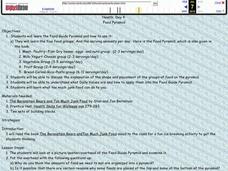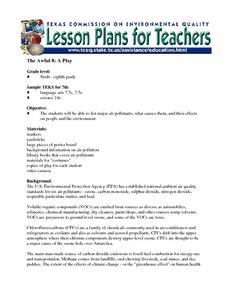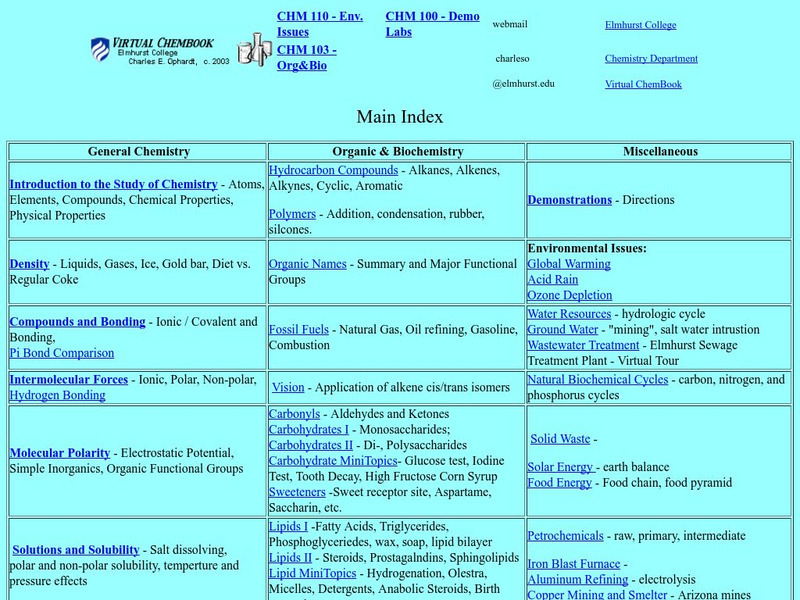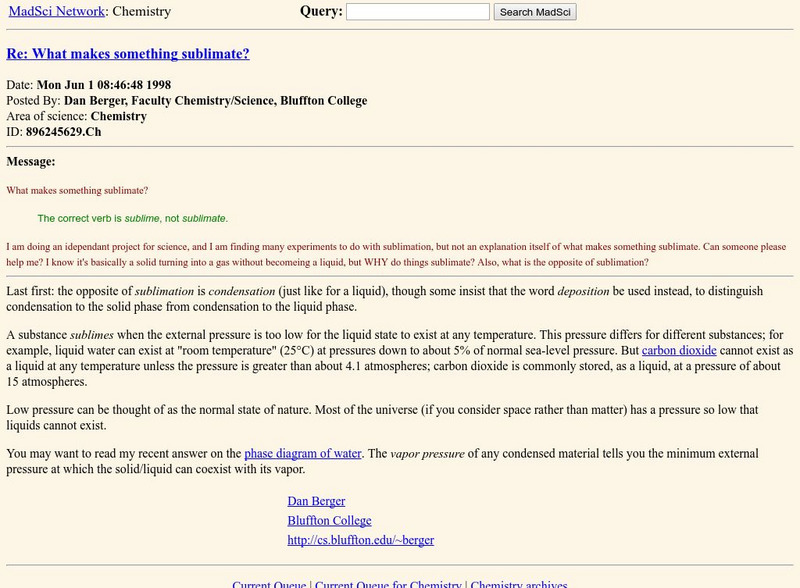Curated OER
A Waste Not Picture Frame
Students reuse old puzzles with missing pieces by painting the remaining pieces and using them to make a picture frame. They embellish the frame with other recycled items.
Curated OER
Some Like It Hot, Some Like It Cold
Students are explained that thermophiles are organisms that have optimal growth temperatures above 50oC. They investigate the temperature ranges for the growth of common bacteria. Students answer the question of do either of these...
Curated OER
Photosynthetically Available Radiation (PAR) Measurements
Students calculate the amount of solar radiation hitting the ground at their school compared to the solar constant. They also repeat the experiment at a water testing site and utilize a light probe to measure the light being reflected...
Curated OER
Mummy Tales
Students research types of mummification. In this burial customs lesson, students work in groups to research different types of mummies and present their research to the class. Students compare and contrast the types of mummification.
Curated OER
Native Americans: Origins
In this Native Americans worksheet, students read about the origins of the Native Americans and the discovery of North America. Students also read about the arrival of the Europeans to the continent and the Plains Indians.
Curated OER
How Much Cereal
Second graders investigate volume through the use of measuring cups. They complete a variety of measuring tasks using kitchen measuring cups. Students accurately measure the volume and compare the results.
Curated OER
From the Heights to the Depths
Students create a relief map of Asia and Australia. They work in small groups on sections of the map to make one complete map of the continents.
Curated OER
Food Pyramid
Young scholars list and explain the five food groups and the recommended serving amounts. In this food pyramid lesson plan, students discuss the food pyramid and journal about their reaction to it. Young scholars complete a...
Curated OER
The Awful 8: A Play
Students perform a play that presents the causes and effects on people and the environment of the eight major air pollutants.
Curated OER
Planets
In this planets worksheet, students read information about Mars, Jupiter, and Saturn and then complete 21 multiple choice, 1 true or false, and 2 fill in the blank questions.
Curated OER
Archaeology For Kids Quiz 50
In this archaeology for kids quiz 50 worksheet, students interactively answer 4 multiple choice questions about mummies, as part of an online magazine.
Curated OER
Photosynthetically Available Radiation (PAR) Measurements Part 1: Calculating the Solar Constant using a TI-8
Twelfth graders are introduced to the term Photosynthetically Available Radiation. In groups, they participate in an experiment to determine how ecosystems survive the conditions in the Arctic. They calculate the amount of solar energy...
Curated OER
Spur of the Moment Act
Pupils perform a skit using creativity. In this role playing lesson, students are given a skit to perform in the "spur of the moment." Pupils use creativity to have the audience correctly guess the situation they are role-playing.
Curated OER
Create a Cloud in a Bottle
Students observe an experiment showing the formation of a cloud. They write a paragraph summarizing the condition that are necessary for a cloud to form and explain the weather situations cause cloud formation.
Curated OER
Condensation
Students explain how water changes from vapor to liquid with a change in temperature by engaging in this experiment. They use a worksheet imbedded in this instructional activity to guide their inquiry.
Curated OER
The Awful 8: The Play
Students become aware of the cause and effects of different air pollutants. They present a play about the different pollutants.
Other
Cold jet.com: What Is Dry Ice Blasting?
Learn about a new, innovated method of cleaning off oils, stripping paints, and other general cleaning applications.
Science Struck
Science Struck: Dry Ice vs. Liquid Nitrogen Explore the Differences
Explains the differences between dry ice and liquid nitrogen, what each is used for, and safety recommendations.
Other
Elmhurst College: Virtual Chembook: What Are Physical Properties and Changes?
Brief descriptions of physical properties, physical changes, and the process of sublimation. The three states of matter, melting point, and boiling point are described. There is one link on the page, which leads to an explanation of...
MadSci Network
The Mad Scientist Network: Chemistry
The question: "What makes something sublimate?" is discussed and explained. Project ideas pertaining to sublimation are suggested.
Utah Education Network
Uen: Why Do Soccer Balls Get Flat Science Fair Project
Discover what happens to the circumference of a balloon when it is placed in dry ice, kept at room temperature, and when it is warmed by a hairdryer.


















